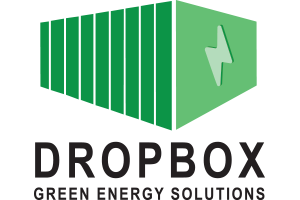Integrating Renewable Energy with BESS: Solar, Wind & Hybrid Systems
Renewable energy sources alone, solar and wind, are intermittent. By pairing them with battery energy storage systems (BESS), organisations can enjoy more consistent, reliable power, reduce grid dependence, and maximise cost savings. DropBox Green Energy Solutions designs systems that integrate renewables with storage in a hybrid model. In this post, we walk through integration strategies, technical considerations, and benefits of hybrid renewable plus BESS systems.
Why Integrate Renewables with BESS?
Smoothing Supply and Managing Variability
Solar and wind output fluctuate; storage fills in gaps and stores excess during peak generation.Maximising Self-Consumption & Lower-Cost Energy
Using stored renewable energy during demand peaks or when grid prices are high yields cost savings.Reducing Grid Dependence & Emissions
Reduces reliance on fossil fuel backup; reduces emissions and improves environmental credentials.
Types of Hybrid Systems
Solar + BESS
Perhaps the most common: PV panels charge batteries; batteries discharge during evening / cloudy periods.Wind + BESS
Wind farms or small-scale wind installations feed into BESS; useful in windy regions or where solar output is low.Solar + Wind + Grid + Generator Hybrid
Complex systems where the grid, solar, wind, battery and standby generator collaborate. Provides the highest resilience.Off-Grid Hybrids
Entirely independent systems, especially in remote, rural, or emergency settings.
Technical & Design Considerations
Sizing Renewables & Storage Appropriately
Matching energy generation capacity (kW/kWp), battery capacity (kWh), power rating, depth of discharge, and expected load.Energy Management & Control Systems
Intelligent controllers, MPPT (for PV), inverters, grid-tie or off-grid inverters, and algorithms to dispatch generation & storage optimally.Assuring Compatibility & Safety
Electrical safety, battery and inverter interconnections, compliance with standards, and fault protection.Cooling & Environment Effects
For large solar arrays, high solar irradiance means high heat; BESS must cope. Liquid cooling may be more desirable.
Financial & Operational Benefits
Reduced Electric Bills & Demand Charges
Using stored renewable energy cuts costs during peak tariff periods.Revenue Streams
Possible participation in grid markets: demand response, ancillary services, or export of excess renewable generation.Environmental & Regulatory Benefits
Helps meet corporate ESG, sustainability targets, possible incentives, subsidies for renewable generation and storage.
How DropBox GES Delivers Hybrid Systems
Modular & Scalable BESS Units
G, E, S-Series offering flexibility to expand as renewable deployment increases.MPPT & Integration Capabilities
Their systems include built-in MPPT, UPS, and intelligent energy management to integrate renewables.Expert Site Survey & Design Support
To assess solar/wind potential, site orientation, shading, and proper sizing of panels vs storage.Full Support: Installation, Commissioning, O&M
DropBox GES offers end-to-end service to ensure hybrid systems perform, are reliable, and are maintained.
Hybrid renewable energy systems with battery storage are fast becoming the go-to solution for reliable, clean, cost-effective power. Whether for commercial sites, off-grid applications, EV charging hubs, or remote infrastructure, integrating solar and/or wind with BESS makes sense. DropBox Green Energy Solutions offers the technical capability, products, and services to make such systems viable, efficient and high-performing. Contact us if you are considering a hybrid build: we can help from planning through to long-term operation.
